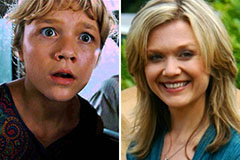The origins of A Class in Wonders could be followed back to the relationship between two individuals, Helen Schucman and William Thetford, equally of whom were distinguished psychologists and researchers. The course's inception happened in the early 1960s when Schucman, who was a medical and study psychiatrist at Columbia University's University of Physicians and Surgeons, started to experience a series of internal dictations. She identified these dictations as originating from an inner style that discovered itself as Jesus Christ. Schucman originally resisted these activities, but with Thetford's support, she began transcribing the messages she received.
Over an amount of eight decades, Schucman transcribed what might become A Program in Wonders, amounting to three quantities: the Text, the Book for Students, and the Manual for Teachers. The Text sits out the theoretical base of the course, elaborating on the primary methods and principles. The Workbook for Pupils contains 365 classes, one for every day of the year, developed to steer the reader by way of a daily exercise of applying the course's teachings. The Guide for Educators provides further advice on how best to realize and show the rules of A Class in Miracles to others.
Among the key styles of A Class in Wonders is the notion of forgiveness. The course shows that true forgiveness is the key to inner peace and a course in miracles to one's divine nature. Based on its teachings, forgiveness is not simply a ethical or ethical training but a fundamental change in perception. It requires making move of judgments, issues, and the understanding of crime, and as an alternative, viewing the planet and oneself through the contact of enjoy and acceptance. A Program in Wonders highlights that true forgiveness results in the recognition that individuals are interconnected and that separation from one another can be an illusion.
Another significant facet of A Course in Wonders is its metaphysical foundation. The course gift ideas a dualistic view of fact, unique between the confidence, which shows divorce, fear, and illusions, and the Holy Soul, which symbolizes love, reality, and spiritual guidance. It suggests that the vanity is the origin of putting up with and struggle, as the Sacred Heart supplies a pathway to therapeutic and awakening. The goal of the program is to help pe
 Tony Danza Then & Now!
Tony Danza Then & Now! Ariana Richards Then & Now!
Ariana Richards Then & Now! Jason J. Richter Then & Now!
Jason J. Richter Then & Now! Michael J. Fox Then & Now!
Michael J. Fox Then & Now! Bug Hall Then & Now!
Bug Hall Then & Now!